By Patrick Regan, president, Crossroads Solar
The recent climate legislation in the Inflation Reduction Act has the potential to do wonderful things for the decarbonization efforts in the United States and for the solar industry. As a U.S. solar panel manufacturer, we at Crossroads Solar are watching and waiting to see how the various credits will play out. Much of the objective of the IRA climate legislation is to generate American-made solar infrastructures in a way that will compete with cheaper imports. To my mind, we have to be sober about the likely outcome – or cheapness – of American-made panels. Prices will moderate but we will not become China, nor should we aspire to be so.
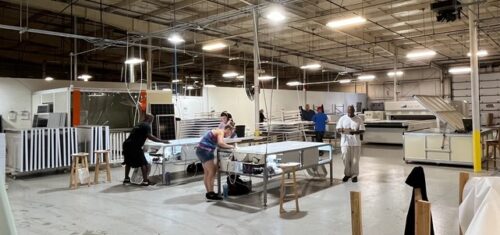 I get asked all the time how my panels made in Indiana compete with (mostly) Asian imports on price and quality. The answer is easy: We are a better-quality module, but we are more expensive. Both points will endure, and we should not expect that increased domestic production will decrease prices to be cheaper than imports. Price is important and will continue to be so, but the cost of a locally made panel should be evaluated on more than the simple dollar-per-watt calculus.
I get asked all the time how my panels made in Indiana compete with (mostly) Asian imports on price and quality. The answer is easy: We are a better-quality module, but we are more expensive. Both points will endure, and we should not expect that increased domestic production will decrease prices to be cheaper than imports. Price is important and will continue to be so, but the cost of a locally made panel should be evaluated on more than the simple dollar-per-watt calculus.
When I am asked about the price of a Crossroads panel relative to an imported option, I generally describe some of the added benefits that come with that added cost. My employees are all men and women transitioning from prison to society. What society gains from this local employment is the reduced cost of housing prisoners. When my employees begin to acquire financial stability, they start spending locally — on cars, insurance, housing and goods. They pay child support, restitution, find partners and get married. Some go to college, which we support financially. You don’t have to have a workforce such as Crossroads Solar’s to add up the benefits of local production. Non-felons also buy cars, rent apartments, and go to the dentist. To allow individuals to add back to our communities, we have to pay them well.
Crossroads is unique on this only in our mission, not in the cost of labor or the benefits our labor brings to local communities. It is difficult to ask a customer to pay more for an American-made solar panel. In the early phase of Crossroads, I was troubled by that added price. Then someone explained to me the added value that a locally made panel provides, and I lost much of my trepidation about our price point. Now I recognize that it is simply what we must pay to maintain the jobs and opportunities on our shores.
Just consider how many of us lamented the race to the bottom on price for everything from screws to door locks and tools that came with the movement from local hardware stores to big box outlets. Those big box stores thrive because we demand low prices, but they also aren’t much help when you break the cheap screw in the wood and it takes you hours to get it out. Quality seemed to suffer as the price went down in this situation. There are some things about “American-made” that we cherish and not complain about pricing. Sometimes we are happy to pay for quality and service.
To put the price dynamic into context for solar, if you paid $0.10/watt more for a 400-W American-made solar panel over the comparable import, you’d pay $40 more per panel. If you use 25 panels in a 10-kW array, the added cost for the panels is $1,000. When the entire system costs upwards of $20,000, how much of a difference does that extra grand make?
At the outside we are talking about a 5% premium for an American-made panel, for a panel that lasts over 25 years. It seems like a small price to pay for things like stability and economic development, along with the customer service that comes with a local production facility. The IRA incentives will push prices down, but our target should not be the box store model.
This dynamic changes considerably when you think of utility-scale installations. Tens of thousands of panels at $40/panel can have an appreciable impact on the bottom line, which is often driven by investment decisions. We still need large-scale imported panels at this stage of our decarbonization initiatives. There is a place for open trade, lower pricing and compromises — but not everywhere and not all the time. A race to the bottom only gets you to the bottom.
Of course, I’m biased at Crossroads Solar. When I argue that price shouldn’t matter as much as the value, I have a strong interest in convincing you that this is so. We are all going to make choices based on our finances and our commitment to climate stability. I care more that you install solar than I do that you buy American-made – or Crossroads Solar – panels. The IRA credits make it much easier to install solar energy systems, regardless of the source of the materials, but it makes it even more affordable if American-made products are purchased. The things that we cannot rebuy are the forests that burn from a harsh climate, the houses and coastlines that are destroyed from excessive storms, the crops that fail because of drought, and the lives lost because we were waiting for a better opportunity to “go solar.” We must do it, and we have to do it now.
The incentives in the IRA will make more solar available at more affordable pricing up and down the value stream. But what the IRA should not do is put U.S. solar production on par with imports. These credits should generate a long and enduring transformation in the U.S. solar industry, toward high-quality products and good-paying manufacturing jobs. Otherwise, it will be a blip that once again moves offshore once the incentive structures change.

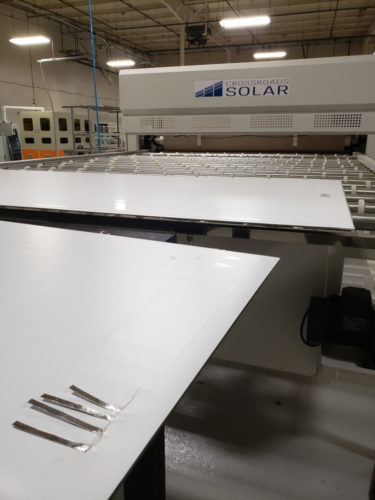
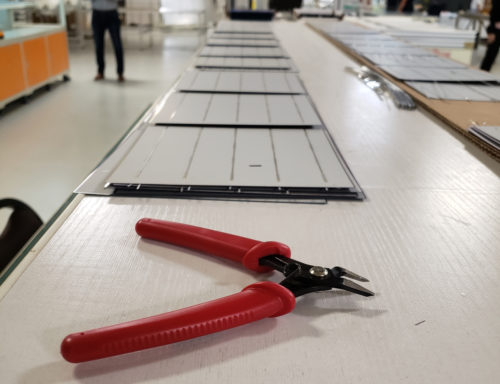
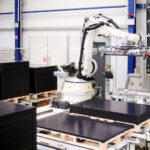
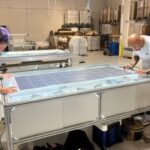
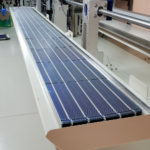
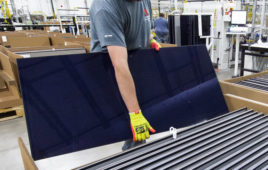
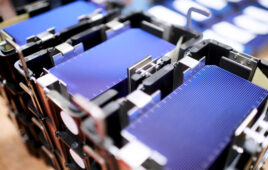
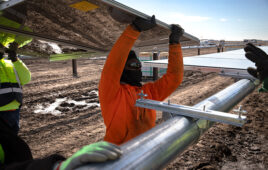

As the admittedly biased co-founder of a new American manufacturer of CdTe Thin Film Solar Panels produced under one roof in NW Ohio, we find ourselves continually explaining the basic math of total cost of ownership and ROI to new customers, almost all whom have been trained to buy solar panels based on a cost per watt basis.
We start with the statement, paraphrasing George Orwell, that “not all watts are created equal”. We then go on to explain that:
1. Buying panels based on a cost per watt basis from a rating derived from a 1-second flash conducted at room temperature (25C) with a 1000W bulb placed directly above the panel….makes as much sense as buying a car based on its tire pressure.
2. Yes, it’s a metric. But it’s a metric unrelated to real world conditions obtained from a test designed to obscure the inadequacies of Si as a semi-conductor – which are limited spectral response, thermal instability, and light induced degradation.
3. Imported PV-Si panels may cheap to buy on a per watt basis, but they are expensive to own over time…..especially when compared to American made CdTe Thin Film panels that produce 10% to 40% more power per watt per sf over time (depending on geographic location. The hotter the site, the more CdTe outperforms Si.)
We provide potential clients with a site specific, apples-to-apples modeled comparison of the power output and ROI provided by our American made panels vs the imported competition. In nearly all cases, our superior economics are hard to refute. The fact that our panels are made in America, have a lower carbon footprint, and are fully recyclable is the frosting on the cake.
Well. First shift eliminate silicon wafers made in China. Importing silicon wafers are ingots and then slicing them into wafers to make panels in the United States is not American made. It is American assembled. Any company that wants to be American made has to make the investment in creating their own ingot making facilities. Or, create a consortium of companies that will support and ingot making facility. This is the actual essence of american-made. Option two: one could do alternative PV materials. Once again this is American made material sourced in America. Therefore you have an American made product.
The IRA was specifically designed to promote production of American made solar technology. Where the raw materials emanates from the United States! Not bringing in wafers or ingots from China and continuing the same path of massive pollution. The amount of energy required to create a silicon wafer is astronomical and a major form of pollution. So, America made has to be made in America with American materials American glass Americans and other PV technology.
Why not consider the life of a panel at say 60 years instead of 30. The end-of-life stretch and cost would
be very attractive even at 80% life. With measured storage to compensate, every residence should have solar. This reduces the environmental problem of disposal. Lets put a fee ($20.00?) for any panel imported to cover the waste renewal cost of warn out panels to compensate the present transportation and burial cost. Call it a dump fee. If a panel is made in America produced from American made parts, it should have no dumping fees. That should encourage more Buy in America even without any subsidies.
I have been using solar PV to offset my daily energy needs for 17 years and for all of the “information” available, one needs to look at the long term use of solar PV overall. YES, there is LID in solar PV panels and over time the panels degrade and put out less power each year. What’s not being said, is over years of use you are more than likely to have an appliance break down and a new one is bought to replace it. An example here is air conditioning systems. A,15 to 20 year old A/C unit replaced with a new latest/greatest VFD driven compressor unit(s) will have Energy Star efficiency allowing the (degraded) solar PV panels to offset energy use by the new appliance. Every replacement of an appliance with an Energy Star device uses less energy over the lifetime of the appliance.
“To put the price dynamic into context for solar, if you paid $0.10/watt more for a 400-W American-made solar panel over the comparable import, you’d pay $40 more per panel. If you use 25 panels in a 10-kW array, the added cost for the panels is $1,000. When the entire system costs upwards of $20,000, how much of a difference does that extra grand make?”
Just the basic overall model of the “crossroads” manufacturing facility, if you can decrease recidivism from the prison system, then there is a cost savings advantage in the costs locally of crimes (not) committed. When one starts “doing the math”, of a $1,000 premium “over” a cheap Chinese panel, one also needs to be brutally honest in the overall consolidated cost of the system. For instance the IRA gives subsidies for solar PV systems with a specific component count (Made in the U.S.A) and for a lot of folks even solar PV panels manufactured in the U.S. right now still depend on Chinese solar PV cells for their panels, which are under the 201 tariff taxes. Then let’s get down to the (simple ROI) of system cost divided by kWh of electricity saved over years of use. ONCE YOU have the solar PV system installed the ROI becomes a moving target. Early on some systems were determined to be a “payoff” in energy savings of up around 20 years. With electric utilities putting in more infrastructure this raises residential electricity rates, the energy you use each day costs more and so the energy you ‘generate’ saves you more money each day. That 20 year ROI has been proven to be from 15 to 12 years for payoff of the system. Folks that already have been in the BEV market and intend to have a BEV (and) charging station at home can save enough on energy costs, (this is electricity savings as well as gasoline savings) each month have found they can pay off their system in as little as 8 years and down to (3) years when using solar PV to charge their BEV. The costs of solar PV panels today are such that one can ‘design’ a system to take into account LID, dusting generation losses and can then put in enough “extra panels” to offset these losses over a 30 year life expectancy of a solar PV system.
Solar PV is a marathon, not a sprint. Buy American and support your own countrymen/women.